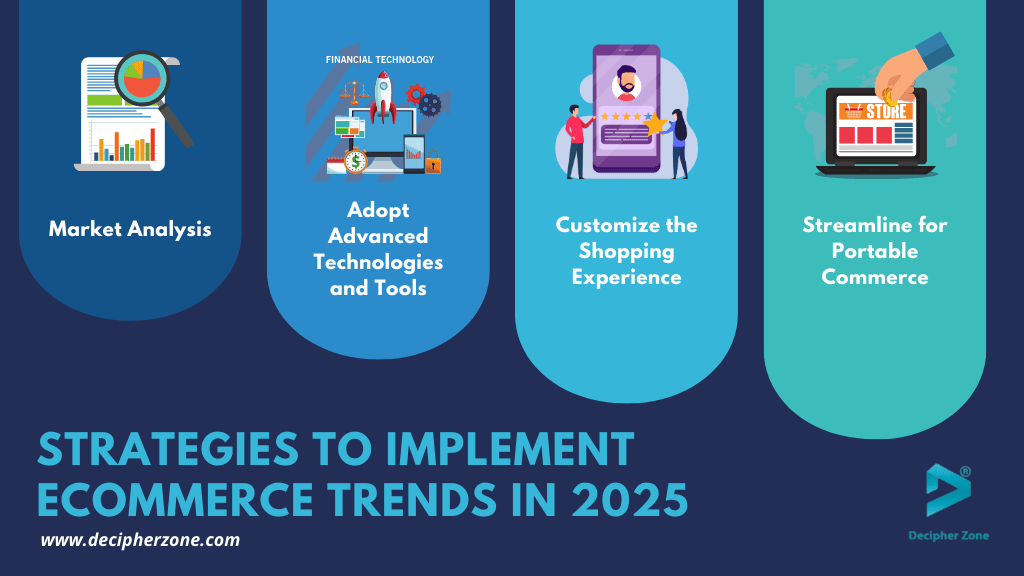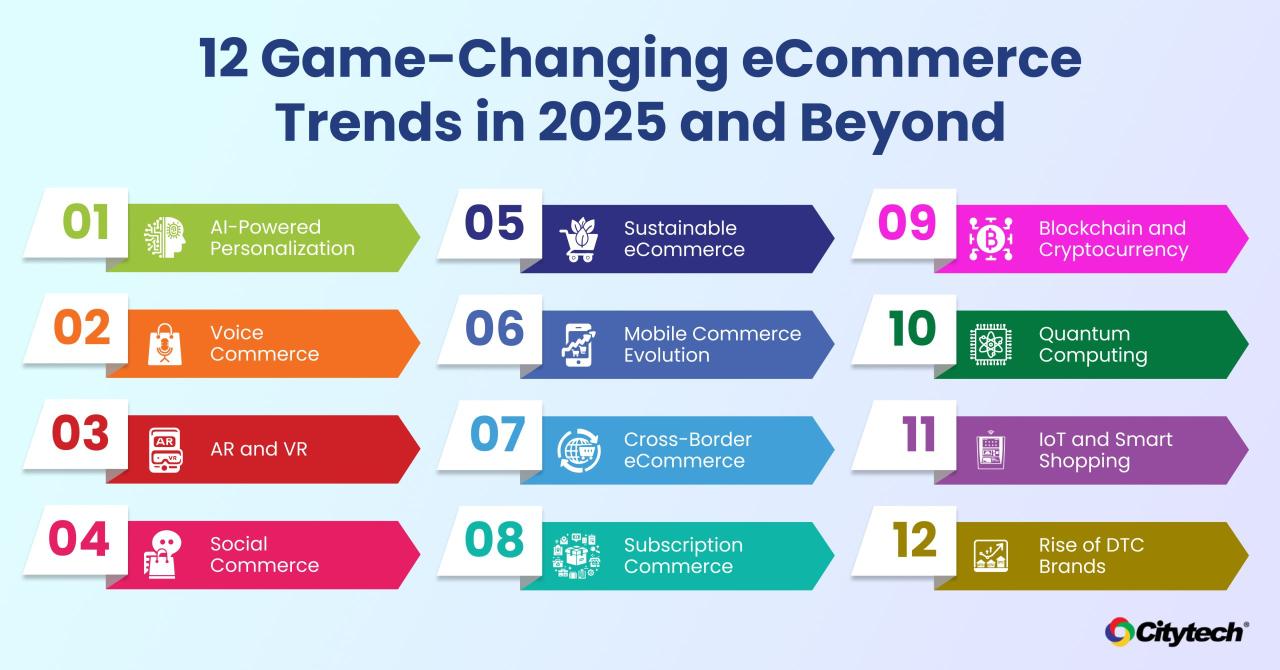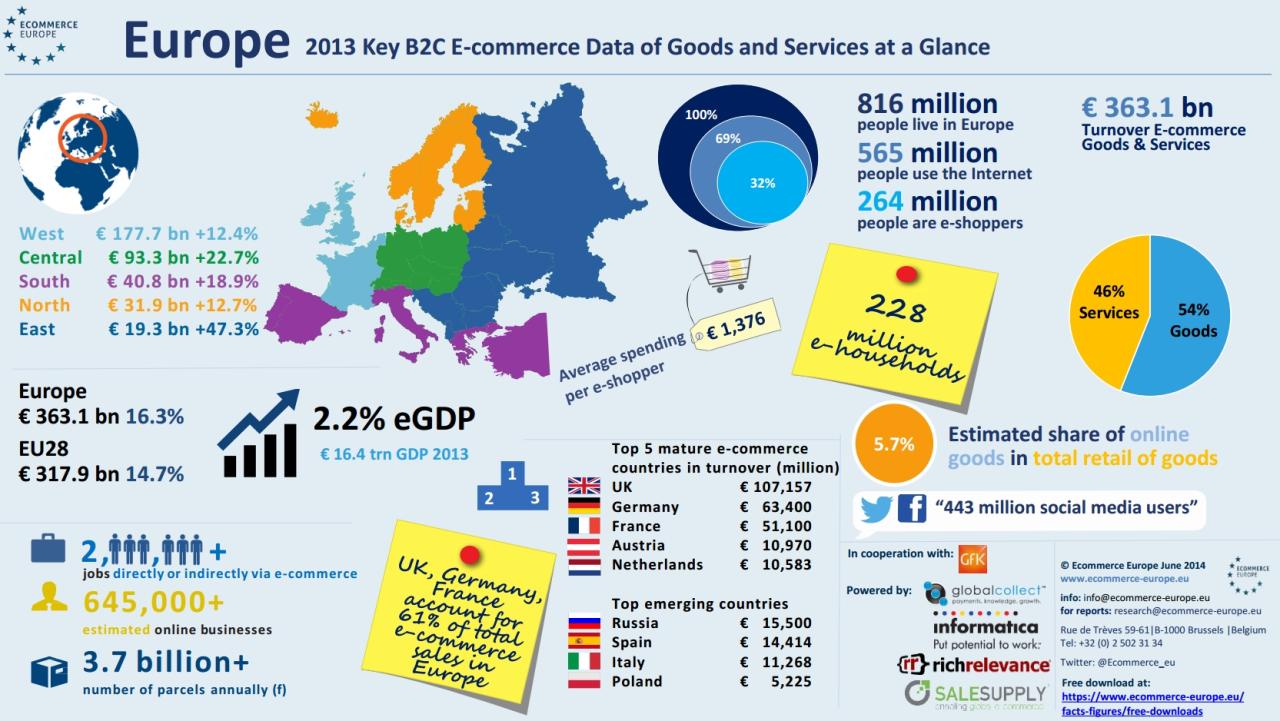As Ecommerce Trends Redefining Consumer Behavior in 2025 takes center stage, this opening passage beckons readers with casual formal language style into a world crafted with good knowledge, ensuring a reading experience that is both absorbing and distinctly original.
The landscape of online shopping is rapidly evolving, driven by key trends that are reshaping consumer behavior in profound ways. From personalized shopping experiences to the integration of augmented reality, the future of ecommerce is set to revolutionize the way we shop online.
Let's delve into the exciting developments that lie ahead.
Overview of Ecommerce Trends in 2025
In 2025, several key ecommerce trends are reshaping consumer behavior and revolutionizing the way people shop online. These trends have a significant impact on traditional retail stores, forcing them to adapt to the changing landscape of the retail industry.
Personalized Shopping Experiences
One of the prominent trends in 2025 is the focus on personalized shopping experiences. Ecommerce platforms are leveraging artificial intelligence and big data analytics to understand consumer preferences and provide tailored product recommendations. This trend enhances customer satisfaction and loyalty by offering a more personalized shopping journey.
Augmented Reality (AR) and Virtual Reality (VR) Technologies
Another trend shaping consumer behavior is the integration of AR and VR technologies in ecommerce. These technologies allow customers to visualize products in a virtual setting before making a purchase, enhancing the online shopping experience. By providing a more immersive shopping experience, AR and VR technologies are redefining how consumers interact with products online.
Social Commerce
Social commerce is gaining momentum in 2025, with social media platforms becoming prominent channels for shopping. Ecommerce brands are leveraging social media features such as live shopping, shoppable posts, and influencer collaborations to reach a wider audience and drive sales.
This trend blurs the lines between social interactions and shopping, creating a seamless shopping experience for consumers.
Sustainability and Ethical Shopping
Consumers in 2025 are increasingly conscious of sustainability and ethical practices in the brands they support. Ecommerce trends are reflecting this shift by offering eco-friendly products, transparent supply chains, and ethical sourcing practices. As a result, traditional retail stores are under pressure to align with consumer values and adopt sustainable business practices to remain competitive in the market.
Personalization and Customization in Ecommerce

Personalization and customization have become key strategies for ecommerce businesses looking to enhance the overall shopping experience for consumers. By tailoring products and services to individual preferences, brands can create a more engaging and personalized shopping experience that can significantly influence consumer behavior.
Personalized Shopping Experiences
- Personalized product recommendations based on past purchases or browsing history can increase the likelihood of conversion by providing customers with relevant options.
- Customized email campaigns with personalized subject lines and product suggestions can improve open rates and engagement, leading to higher customer retention.
- Interactive shopping experiences, such as virtual try-on tools or personalized styling services, can create a sense of exclusivity and personalization that drives customer loyalty.
Role of Customization in Customer Loyalty
- Allowing customers to customize products, such as choosing colors, sizes, or adding personal touches, can create a sense of ownership and uniqueness that fosters loyalty.
- Offering personalized discounts or rewards based on customer behavior and preferences can incentivize repeat purchases and increase customer lifetime value.
- Personalized customer support and communication can build trust and rapport with customers, leading to long-term relationships and brand advocacy.
Examples of Personalization Strategies
-
Amazon
utilizes personalized product recommendations and targeted email campaigns to enhance the shopping experience and increase customer engagement.
-
Netflix
uses personalized content recommendations based on viewing history to keep users engaged and satisfied with their streaming service.
-
Nike
offers customization options for shoes and apparel, allowing customers to design their own products for a unique and personalized experience.
Augmented Reality (AR) and Virtual Reality (VR) in Ecommerce

Augmented Reality (AR) and Virtual Reality (VR) technologies are revolutionizing the way consumers experience online shopping. These immersive technologies offer a unique and interactive way for customers to engage with products, creating a more personalized and engaging shopping experience.
Enhancing the Online Shopping Experience
AR and VR allow customers to visualize products in a virtual environment, giving them a better sense of how the products will look and feel in real life. This helps to bridge the gap between online and offline shopping experiences, boosting customer confidence and reducing the likelihood of returns.
For example, furniture retailers can use AR to allow customers to see how a couch would look in their living room before making a purchase.
Changing Consumer Perceptions of Products
AR and VR have the power to transform how consumers perceive products. By providing a more interactive and immersive shopping experience, these technologies can create a stronger emotional connection between customers and products. This can lead to increased customer satisfaction and loyalty.
For instance, beauty brands can use AR to allow customers to virtually try on makeup products, enhancing the overall shopping experience.
Future Applications of AR and VR in Ecommerce
The potential applications of AR and VR in ecommerce are vast and continue to evolve. In the future, we can expect to see more retailers integrating AR and VR technologies into their platforms to offer unique and engaging shopping experiences.
From virtual fitting rooms for clothing retailers to virtual tours of real estate properties, the possibilities are endless. As these technologies become more accessible and advanced, they will undoubtedly play a crucial role in shaping the future of ecommerce.
Sustainability and Ethical Shopping Practices

The increasing awareness of environmental issues and ethical concerns has led to a rise in demand for sustainable and ethically sourced products. Consumers are now more conscious of the impact of their purchasing decisions on the planet and society.
Brands Embracing Sustainability
- Patagonia: Known for its commitment to environmental activism, Patagonia has integrated sustainability into every aspect of its business, from sourcing materials to manufacturing processes.
- TOMS: With its "One for One" model, TOMS has made a positive impact by donating a pair of shoes to a child in need for every pair purchased.
- Reformation: This fashion brand focuses on sustainable practices such as using eco-friendly materials and implementing water-saving technologies in its production.
Epilogue
In conclusion, Ecommerce Trends Redefining Consumer Behavior in 2025 is poised to transform the digital shopping experience, offering consumers unprecedented levels of customization, interactivity, and sustainability. As we look towards the future, it's clear that the world of ecommerce is on the brink of a new era, one that promises to redefine the very essence of consumer behavior.
Detailed FAQs
How are personalized shopping experiences influencing consumer behavior?
Personalized shopping experiences are creating deeper connections between consumers and brands, leading to increased loyalty and engagement.
What role does customization play in enhancing customer loyalty?
Customization allows consumers to tailor products to their preferences, fostering a sense of ownership and loyalty towards the brand.
How is augmented reality (AR) changing consumer perceptions of products?
AR technology provides immersive experiences that allow consumers to visualize products in real-world settings, enhancing their understanding and decision-making process.
Why are sustainability practices influencing consumer purchasing decisions?
Consumers are increasingly conscious of their environmental impact, leading them to prefer brands that prioritize sustainability and ethical practices.




